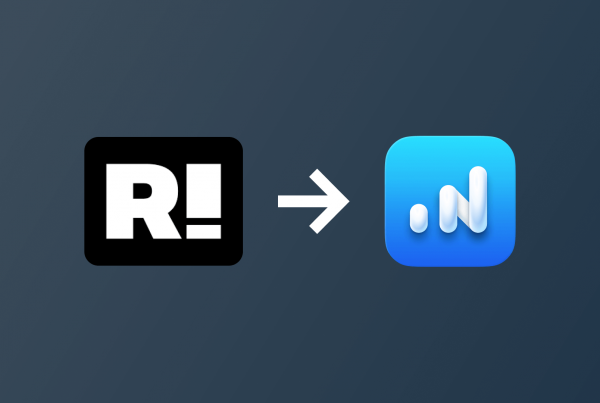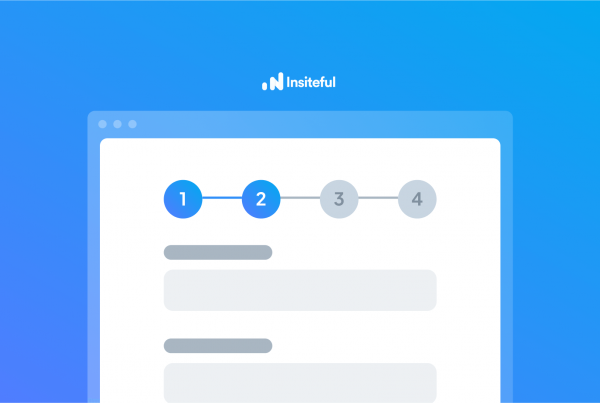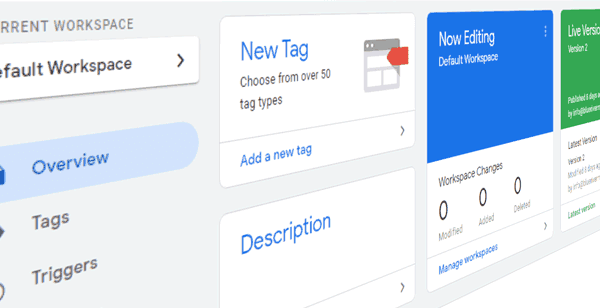Why form tracking matters
Missing a potential lead that doesn’t click submit on your form translates to lost business — esp. considering studies suggest, on average, over 2 in 3 form visitors leave before completion. Form abandonment is most likely the leading driver of lost revenue online for your company! This is exactly why form tracking is a critical component of online lead generation and conversion optimization.
What can you do with Form Analytics?
Form analytics help measure how your website visitors interact with form. While some form analytics solutions focus on simply collecting metrics (e.g. abandonment rate, hesitation rate), others offer more advanced functionality (i.e. field-level insights & integrated follow-up automation) but all follow the same general principles:
The primary goal is to discover and improve bottlenecks and friction points in the end-user experience and journey.
By analyzing form filling behavior for pain points, you can use these tools to solve for the leaks in your online sales funnel while gathering any relevant data for your internal use. Simply put, form analytics provides key information for conversion rate optimization, which helps track every click & interaction a visitor makes while filling a form on your website.
What web forms can do for you
Forms have arguably been the foremost online lead generation tool since the dawn of the Internet.
For many businesses, web forms are a powerful channel to collect customer information & drive new business online. From “Book a demo” forms for software companies and “Schedule a session” sign-ups for coaching businesses to “Request quote” and “Contact us” funnels for service providers, web forms everywhere are key sales drives for digital-first businesses across industries.
How-to create the perfect web form
The first step to a high-converting web form is effective design. You may want to check out our complete guide on how-to design the perfect web form and prevent form abandonment here, but to briefly summarize:
-
Clear copy & crucial notices
In a case study by ConversionXL, CRO expert Michael Aagaard of Unbounce was surprised by a 14% drop in conversions after reducing the number of fields. By reverting these deletions and optimizing field labels instead, Michael achieved a 19.21% conversion life. Moral of the story: clear copy matters just as much (if not more) than selecting the right form fields that users prefer to interact with. For instance, be sure to display crucial notices to highlight key notifications that remove barriers-to-entry (i.e. “no credit card required”, “risk free”).
Similarly, be precise with labels and call-to-actions (CTAs)! For goodness sake, don’t end your contact form with a “Submit” button. Use specific language (i.e. Request Quote, Get a Demo, Schedule Now), not whatever generic copy that is generated by default.
-
Choose fields carefully
That’s not to say that form length doesn’t matter. In most cases, a shorter form will convert better, but the key is discretion & knowing which fields matter most to your target audience and create the least friction.
Depending on the purpose of your contact form(s), certain personal details (i.e. Home Address, Birthday, Job/Company) can put-off users & make them quit before completing. Being discerning with which form fields to display &/or require is the first step to a high-converting form.
-
Design layout
Alternatively, breaking up long forms with pagination & progress bars can make the experience more approachable and prevent users from being overwhelmed. In particular, multi-page forms have increased conversions by up to 200-300% in some case studies. The best option is usually to experiment with layout and styles to find what works best for your users!
If you found this short summary of our tips helpfuls, be sure to check out the full infographic guide here.
Why tracking your web forms is important
Studies suggest over 2 in 3 website visitors who start filling out a form leave before completing it: form abandonment is a leading driver of lost revenue opportunity for many businesses.
For many companies, forms drive leads for sales teams. Missing a potential lead translates to lost business, which is why form tracking is such a critical component of conversion rate optimization.
Form tracking enables you to identify the bottlenecks in your leads forms & optimize individual form fields to increase conversions. For businesses where sales are driven by lead forms (e.g. for booking appointments, scheduling demos, or requesting quotes), using form analytics to optimize online conversions adds directly to your bottom line.
With the right form tracking solution & strategy, you can completely seal any such leaks in your funnel and even recapture lost leads using contact information from partial form-fill data.
Setting up Form Analytics
How to track any web form in 2 clicks
- Add your website: As a preliminary step to setting up form abandonment, you’ll need to just login to Insiteful & visit the Domains page and add your website where indicated in the screenshot below.

- Install code: Whether you use a tool like Google Tag Manager to manage your third-party marketing tools, or an integration like WordPress, there’s a simple, one-click installation option for your web forms & websites.
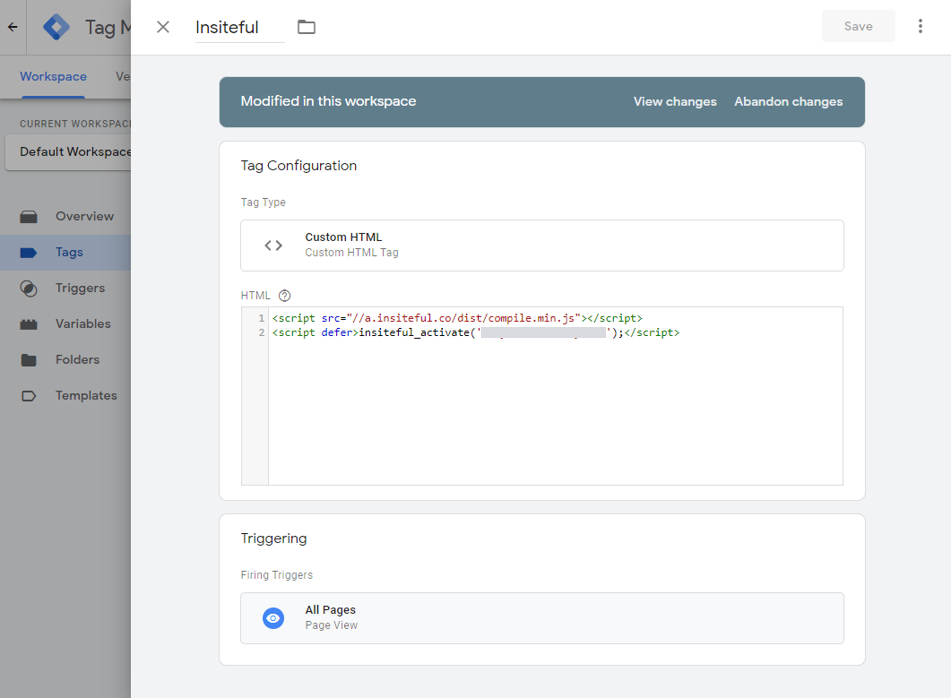
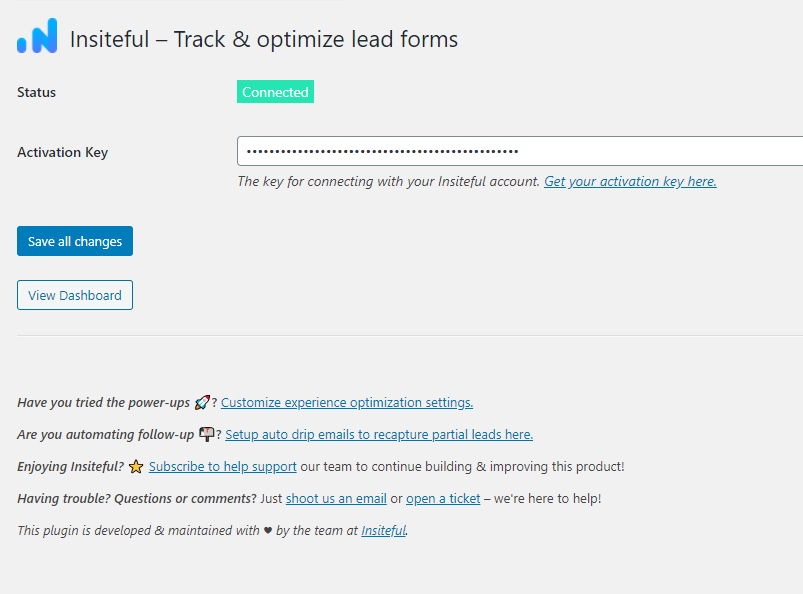
That’s all it takes! Just two simple steps to start capturing 100% of the visitors that fill out your web forms.
Other ways to track your web forms
While the above solution utilizes Insiteful: a form abandonment tracking solution designed specifically for out-of-the-box analytics — depending on what analytics you already use, your forms may already have some tracking data available:
For instance, it isn’t impossible to track forms via Google Analytics using custom JS code, but implementing the solution requires substantial prior experience with Javascript coding and Google Analytics customization. In a similar vein, some bundled CRM & software solutions (i.e. VWO, Clicktale, Hotjar, Zoho) include limited form tracking functionality as a broader enterprise suite of tools.
Regardless of how you track your web forms, doing so has been proven an essential & high ROI activity for any business that drives online business with forms.
How & what to measure
Universally speaking, form analytics focus on a few key metrics:
- Abandonment rate
- Confusion rate
- Completion rate
While some solutions focus on simply collecting the above metrics, others offer more advanced functionality (i.e. field-level insights & integrated follow-up automation) & reporting:
Web Form Tracking in Insiteful
Immediately when you login to the Insiteful dashboard, three powerful web tracking reports are at just one click away:
-
Report: Form Analytics & Field Insights
Clicking on the chart icon next any given web form on the Forms page will bring you to the report pictured below: a top-level summary of your form performance, visualized as a funnel, along with smart recommendations on areas for improvement (i.e. the “confused field” warning below).
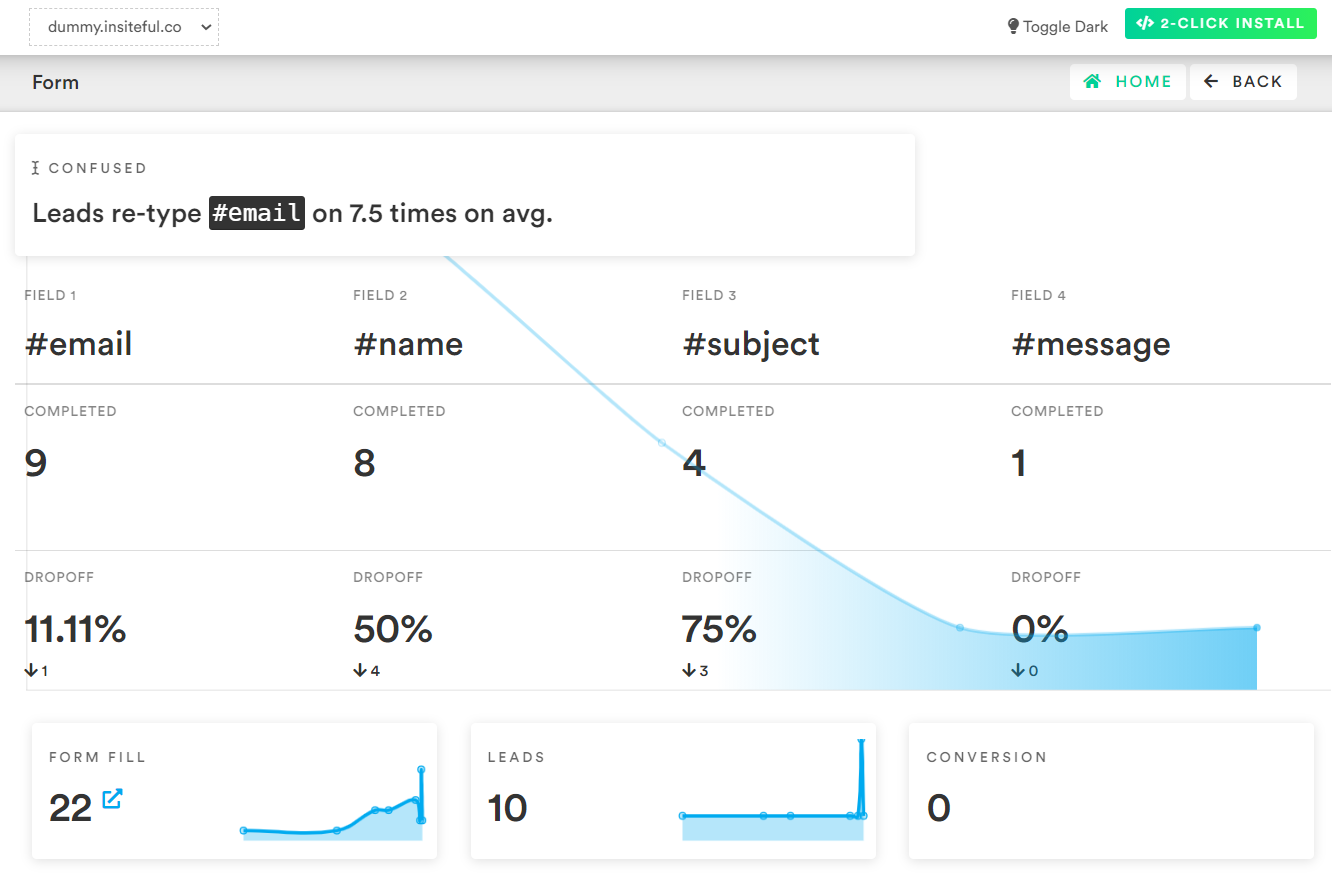
-
Report: Partial Form Entry Tracking
The Form Fills report (pictured below) shows the contacts that are filling out your online web forms. In cases where we’re able to collect enough partial data to assemble contact information, we’ll send you an email notification and add the profile to the Leads page.

-
Report: Leads Page
As mentioned earlier, the Leads page lists all email leads where Insiteful is able to capture sufficient contact information from partial form entry data. On this page, you can assign automatic follow-up sequences to send drip emails to convert these leads. For more about automatic follow-up and other features of Insiteful, click here.
Conclusion
Form tracking enables you to identify and optimize the bottlenecks in your leads forms in order to increase conversions. Tracking your web forms is a key component of any online lead generation strategy and can uncover more leads for your business.
Want to start closing more deals online? It just takes two simple steps to start capturing 100% of form entries from any web form with Insiteful! What are you waiting for?
Make every click count: automagically capture, re-engage & convert more leads from your web forms — with Insiteful™, the all-in-one form abandonment tracking solution.
And don’t forget, if you like this article, then please follow us on Twitter, Facebook, IndieHackers, or subscribe below.



